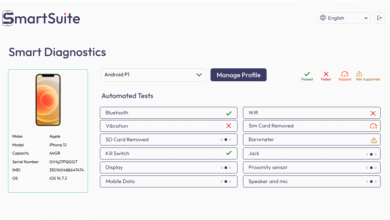The Data-Driven Dialogue: Optimizing Outreach with Actionable Insights With WhatsApp Business API Integration

Modern businesses generate mountains of communication data daily, yet most struggle to transform this information into meaningful improvements. Smart companies recognize that every customer interaction contains valuable signals about preferences, timing, and engagement patterns. The shift toward data-driven messaging represents more than just trend following—it fundamentally changes how organizations connect with their audiences and measure success.
WhatsApp Business API integration has become essential for companies seeking comprehensive analytics alongside powerful messaging capabilities. This platform delivers detailed insights into message delivery rates, customer response patterns, and conversation quality metrics that traditional communication channels simply cannot match. Businesses leveraging these analytical features report significantly improved campaign performance and more strategic resource allocation decisions across their entire communication infrastructure.
Understanding the Analytics Revolution in Business Communication
Real-Time Performance Tracking: Companies today demand immediate visibility into their messaging campaigns, moving beyond simple sent confirmations to comprehensive engagement analytics. Modern platforms capture granular data about delivery timing, read receipts, response rates, and conversation progression that enables precise campaign optimization. This level of detail allows businesses to identify exactly which messages resonate with specific audience segments and adjust their approach accordingly.
Customer Behavior Pattern Recognition: Advanced analytics platforms now decode complex customer interaction patterns, revealing preferences that weren’t visible through traditional communication methods. These systems track response timing, message type preferences, and engagement sequences to build detailed behavioral profiles. Organizations use this intelligence to predict optimal send times, preferred content formats, and likely conversion pathways for different customer segments.
Performance Benchmarking Capabilities: Data-driven platforms provide industry-specific benchmarks that help businesses understand their relative performance against competitors and market standards. These comparative metrics include average response times, engagement rates by message type, and conversion performance across different customer journey stages. Companies can identify underperforming areas and implement targeted improvements based on concrete evidence rather than assumptions.
Strategic Audience Segmentation Through Data Intelligence
Behavioral Segmentation Techniques: Modern analytics tools segment audiences based on actual interaction patterns rather than basic demographic information alone. These platforms analyze response frequency, preferred communication times, message type engagement, and conversation length preferences to create highly targeted segments. Businesses achieve significantly higher engagement rates when they customize their messaging approach for each behavioral segment rather than using broad, one-size-fits-all campaigns.
Dynamic Segment Refinement: Smart platforms continuously update audience segments based on evolving customer behavior patterns, ensuring messaging strategies remain relevant and effective. This dynamic approach recognizes that customer preferences change over time and adjusts segmentation criteria automatically based on recent interaction data. Organizations benefit from messaging campaigns that stay aligned with current customer preferences without requiring manual segment updates.
Cross-Channel Behavior Analysis: Comprehensive analytics platforms track customer interactions across multiple communication channels to build complete engagement profiles. This holistic view reveals how customers prefer to interact at different stages of their journey and enables seamless channel transitions. Businesses can optimize their entire communication strategy rather than managing isolated channel performance metrics.
Read also: Smart Office: Redefining the Future of Workspaces Through Technology
Measuring True ROI Through Advanced Analytics
Revenue Attribution Modeling: Advanced platforms connect messaging activities directly to revenue outcomes, providing clear visibility into which communication strategies generate actual business value. These systems track customer journeys from initial message engagement through final purchase decisions, revealing the true impact of different messaging approaches. Companies can allocate resources more effectively when they understand which communication investments produce measurable returns.
Cost Efficiency Analysis: Detailed analytics help businesses optimize their messaging spend by identifying the most cost-effective approaches for different objectives and audience segments. These platforms compare costs across different message types, timing strategies, and audience segments to highlight optimization opportunities. Organizations reduce overall communication costs while improving results by focusing resources on proven high-performance strategies.
Long-Term Value Tracking: Sophisticated analytics platforms measure customer lifetime value impacts from different messaging strategies, extending beyond immediate conversion metrics. This approach recognizes that effective communication builds long-term customer relationships that generate ongoing revenue streams. Businesses can justify communication investments by demonstrating sustained value creation rather than just short-term campaign performance.
Evidence-Based Message Optimization Strategies
Content Performance Analysis: Data-driven platforms analyze which message content elements generate the highest engagement and conversion rates across different audience segments. These systems examine factors like message length, tone, call-to-action placement, and media inclusion to identify optimal content formulas. Businesses can create more effective messages by following proven content patterns rather than relying on creative intuition alone.
Timing Optimization Intelligence: Advanced analytics reveal optimal sending times for different customer segments and message types, moving beyond generic best practice recommendations. These platforms analyze individual customer response patterns to determine personalized optimal engagement windows. Organizations achieve higher response rates by delivering messages when recipients are most likely to engage rather than following broad timing guidelines.
A/B Testing Capabilities: Modern platforms enable sophisticated testing of different messaging approaches with statistical significance tracking and automated optimization recommendations. These systems can test multiple variables simultaneously while maintaining clear insights into which changes drive improved performance. Companies can continuously refine their messaging strategies based on concrete evidence rather than speculation about what might work better.
Implementation Best Practices for Data-Driven Messaging
Infrastructure Requirements: Organizations need robust data collection and analysis infrastructure to support comprehensive messaging analytics programs. This includes systems capable of processing large volumes of interaction data in real-time while maintaining customer privacy and security standards. Companies should evaluate their current technical capabilities and identify necessary upgrades before launching advanced analytics initiatives.
Team Training and Development: Successful data-driven messaging requires teams skilled in interpreting analytics data and translating insights into actionable communication strategies. Organizations benefit from investing in training programs that help staff understand key metrics, identify optimization opportunities, and implement data-backed improvements. This human element ensures that sophisticated analytics capabilities translate into practical business improvements.
Key implementation considerations include:
- Data privacy compliance across all messaging channels and analytics processes
- Integration capabilities with existing CRM and marketing automation systems
- Scalability planning for growing message volumes and expanding analytics requirements
- Staff training programs focused on practical analytics application and optimization techniques
- Regular performance review processes that connect analytics insights to business outcomes
Continuous Improvement Processes: Effective data-driven messaging requires ongoing optimization cycles that systematically test new approaches and refine existing strategies. Organizations should establish regular review processes that examine analytics data, identify improvement opportunities, and implement testing programs. This iterative approach ensures that messaging strategies evolve with changing customer preferences and market conditions.
Technology Integration and Platform Selection
API Integration Considerations: Businesses need messaging platforms that provide comprehensive API access for seamless integration with existing business systems and custom analytics requirements. These integrations enable automated data flow between messaging platforms and other business tools, creating unified views of customer interactions. Organizations can make more informed decisions when their messaging data integrates smoothly with broader business intelligence systems.
Scalability Planning: Growing businesses require messaging platforms capable of handling increasing message volumes while maintaining detailed analytics capabilities and response times. This includes consideration of peak usage scenarios, geographic expansion requirements, and evolving feature needs. Companies should select platforms that can grow with their business rather than requiring costly migrations as their needs expand.
Security and Compliance Framework: Data-driven messaging platforms must meet stringent security requirements while providing comprehensive analytics capabilities across regulated industries. This includes data encryption, access controls, audit trails, and compliance reporting features that satisfy industry-specific requirements. Organizations operating in regulated sectors need platforms that balance analytics capabilities with necessary compliance features.
Future Trends in Messaging Analytics
Predictive Analytics Integration: Next-generation platforms will incorporate predictive analytics capabilities that forecast customer behavior and recommend optimal messaging strategies before campaigns launch. These systems will analyze historical patterns to predict likely outcomes for different messaging approaches and audience segments. Businesses will benefit from proactive optimization recommendations rather than reactive performance analysis.
AI-Powered Optimization: Advanced artificial intelligence will automate many aspects of messaging optimization, continuously adjusting strategies based on real-time performance data. These systems will test multiple approaches simultaneously and automatically implement improvements without requiring manual intervention. Organizations will achieve better results with less manual optimization effort as AI handles routine strategy adjustments.
Cross-Platform Intelligence: Future analytics platforms will provide unified insights across all communication channels, creating comprehensive customer journey analytics rather than isolated channel metrics. This holistic approach will reveal optimization opportunities that span multiple touchpoints and communication methods. Companies will optimize their entire customer communication strategy rather than managing separate channel performances.
Conclusion
Data-driven messaging represents a fundamental shift toward evidence-based communication strategies that deliver measurable business results rather than relying on intuition or broad best practices. Organizations implementing comprehensive analytics programs report significant improvements in engagement rates, conversion performance, and overall communication ROI. The key lies in selecting platforms that provide detailed insights while maintaining the flexibility to adapt strategies based on evolving customer preferences and business requirements. Companies ready to embrace this analytical approach should begin by evaluating their current communication data capabilities and identifying opportunities to implement more sophisticated measurement systems that connect messaging activities directly to business outcomes.




